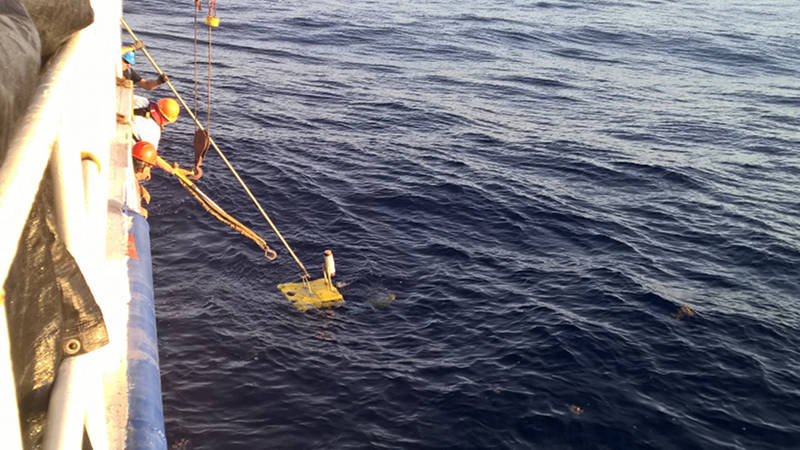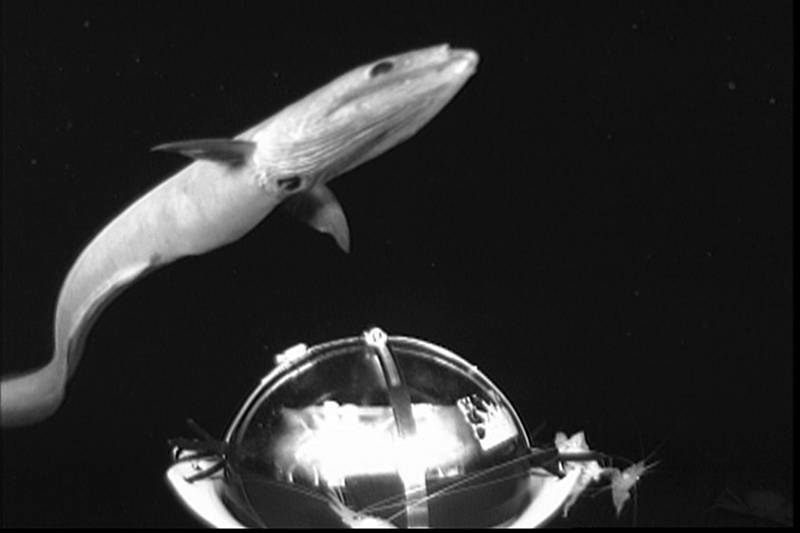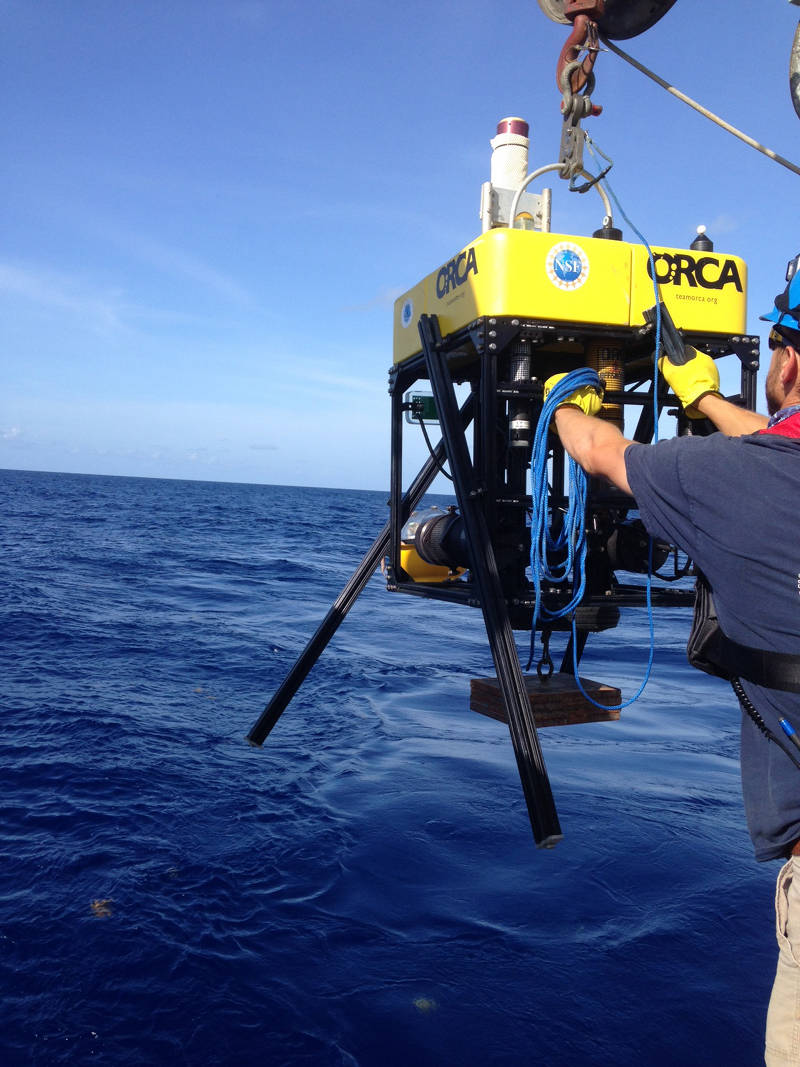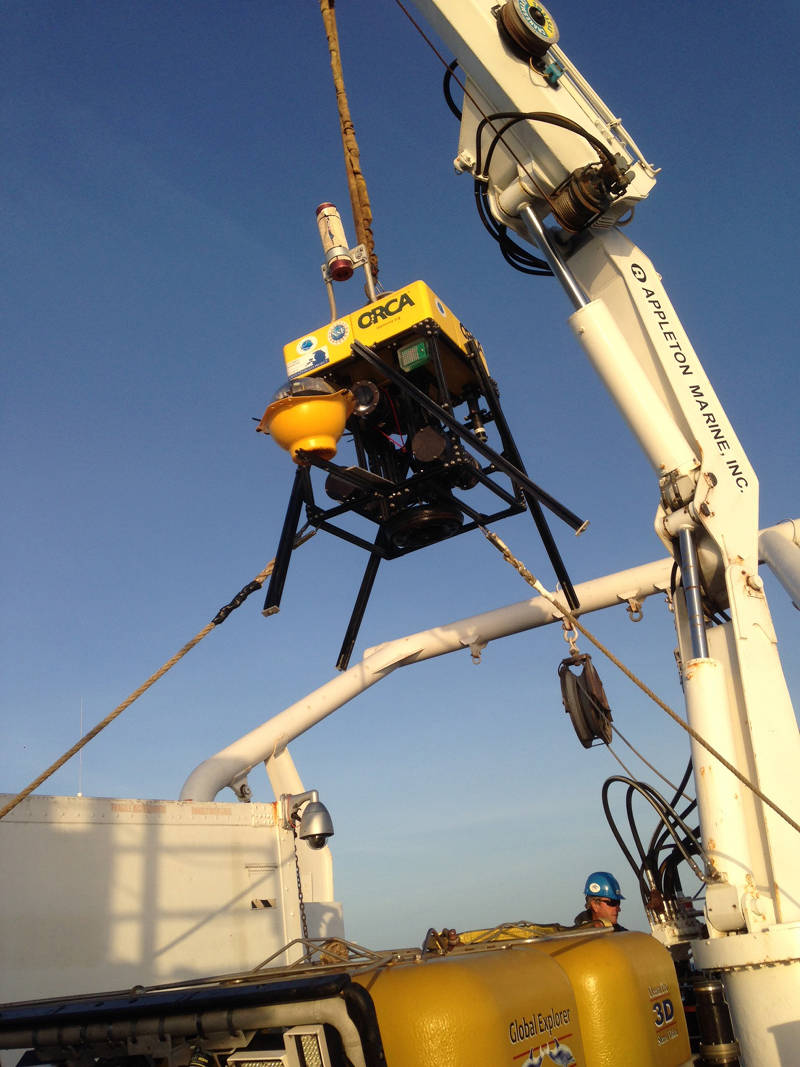
By Mackellar “Mackey” Violich - Graduate Student, Florida State University
July 20, 2015

Retrieving the Medusa on the side of the ship. Image courtesy of NOAA Bioluminescence and Vision on the Deep Seafloor 2015. Download larger version (jpg, 635 KB).
Today is the fifth day of our cruise and the Medusa is on her second drop. This is the first time for the Medusa to be in the Gulf of Mexico. The Medusa was the first camera to capture the live images of the Giant squid in the Pacific in 2012.
The disadvantages of using the remotely operated vehicle (ROV) are that it is loud, large, and produces white light. Therefore, the ROV can scare away many of the larger more mobile animals we are interested in studying.

A cutthroat eel, Synaphobranchid, from Medusa video capture. Image courtesy of NOAA Bioluminescence and Vision on the Deep Seafloor 2015. Download larger version (jpg, 55 KB).
The Medusa is silent and has near infrared light, which allows it to capture organisms in the deep-sea on film using very little impact. We attract the organisms using an e-jelly that replicates bioluminescence reactions of jellyfish. We also use squid and sardines to create a bait plume. The Medusa can record up to 30 hours of video in high definition, which means there is a lot of video to analyze.
One of the scariest things about the Medusa is deploying her because she isn’t attached to the ship. In order to deploy the Medusa, there is a lot that needs to be done. I have to check all the batteries of all the different parts, because they are all vital to the collection of the video. Here is my deployment checklist:

Medusa being lowered into the ocean. Image courtesy of NOAA Bioluminescence and Vision on the Deep Seafloor 2015. Download larger version (jpg, 643 KB).
Next is the scariest moment, when we lower her off the boat and release her. Than we enable the PORT system with the transducer, which is how we talk to her, through acoustic signals. I want to make sure she reaches the bottom, so I range test her until she has reached the bottom safely. Now we have to wait…
Twenty-four hours later...

Medusa being lifted onto the ship's deck. Image courtesy of NOAA Bioluminescence and Vision on the Deep Seafloor 2015. Download larger version (jpg, 571 KB).
We put the transducer in the water, wake the Medusa up, and ask her to drop her weight system. A hook will then drop and she will become positively buoyant. Than she will start to float to the top. Once she is at the surface, we have people out looking for the Medusa. Once she is spotted, we collect her, and bring her on board. She is safe and sound until the next drop.
Once she is on board we then have to charge her batteries and download the video. I will start prepping her for the next drop, usually the following day. We also watch the 24 hours of collected video and analyze it on the boat.
So far, we have seen cutthroat eels, shrimp, and crabs surrounding the e-jelly and bait. She is currently on the bottom on the Gulf of Mexico sitting at 1,975 meters. This will be her deepest deployment yet. We will see what is on the video next...